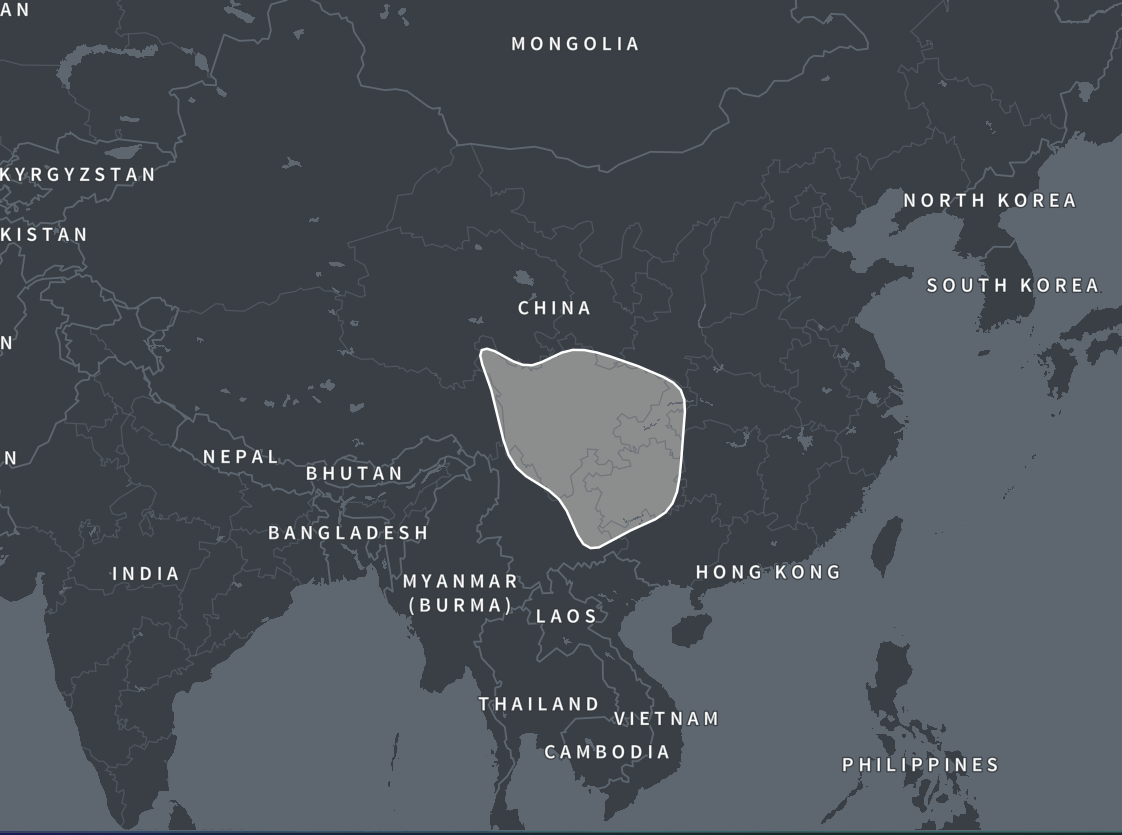What is Southwestern China DNA Ethnicity on Ancestry?
The results of our AncestryDNA tests may sometimes be what we expect or on occasion may be a big surprise. Either way, often we need a little more information regarding some of the regions that arise in our ethnicity estimates.

One region that is not at all uncommon is the Southwestern China DNA region. Those who still live in this region already understand all about its history and culture. There are others, however, who may never have even visited or in fact been aware that they have ancestors from that area.
In this post we will go into more detail with regards to the history, geography and culture of the Southwestern China region. We will also discuss what it means to be from this region and how easy or difficult it might be to trace our roots in the Southwestern China Region.
What Is the Southwestern China DNA Region?
The Southwestern China region is a relatively small DNA region which is found mainly in a few Chinese provinces. Three Provinces are central to this DNA region Sichuan, Chongqing and Guizhou. There is however some bleed over into the neighboring provinces of:
- Henan
- Hubei
- Hunan
- Guangxi
- Yunnan
- Qinghai
- Shaanxi

China Region History
The country we know today as China was once home to the Yangshao and Longshan cultures who were prevalent in the area dating back to 5,000 – 2,000 BC. Evidence of human habitation and that of other human relatives such as homo erectus date back hundreds of thousands of years in the region with huge finds of homo erectus skeletons being well known including the famous Peking Man.
Yangshao Culture
The Yangshao were a neolithic culture found mostly along the middle reaches of the Yellow River. They flourished in the region which is today occupied by the Henan, Shaanxi and Shanxi provinces. They seem to have favored small-scale cultivation over high yield agriculture and would move to new lands once the local soil quality was depleted.

The Yanghao also kept livestock such as pigs, sheep, goats and cattle but much of their meat still came from hunting and fishing.
Longshan Culture
Sometimes referred to as the Black Pottery Culture, the Longshan were centralized around the middle and lower Yellow River valley region. There were two distinct groups which are named after the provinces associated with the area they once inhabited. These are the Shandong Longshan and the Henan Longshan.
Their talent with pottery was advanced compared to contemporary cultures nearby and the distinctive black pottery they made has been found in dig sites throughout Northern China. They too were interested in agriculture growing mainly millet and they also had pigs, sheep and goats but pork was their staple protein.
The Beginning of the Dynasties
Chinese tradition suggests that the Dynastic system that would become the ruling class for millennia first emerged around 2,100 BC. The first dynasty was the Xia and for many years historians thought them to be potentially just legendary. Recent archaeological digs in Henan province however seem to support their existence as a real dynasty.
The successors of Xia the Shang dynasty ruled between 1766 – 1122 BC and are the first confirmed dynasty with scholars still undecided if Xia was anything more than a mythical dynastic power. There would be numerous dynasties that would come into power over the millennia with internal power struggles being very common.
Southwestern China
The Southwestern China DNA region is in a part of China that was not incorporated until 230 BC. It was under the Qin dynasty emperor Shi Huangdi that the area of modern-day Yunnan, Guizhou and Sichuan became part of China.
There would still remain some independent states in the region exerting influence. The most notable were the Nanzhao Kingdom in the 8th and 9th centuries and the Dali Kingdom in the 10th and 11th centuries. Eventually however the whole Southwestern region would be pacified under the Ming dynasty.

Around the 13th century the Yuan dynasty finally expanded China's frontiers to include the Tibet plateau. This essentially was the final step in defining modern-day China's borders.
During the 18th century control of the Tibet plateau was key to the Great Game confrontations between the imperial powers of Britain, Russia and China. Otherwise however the southwestern region under the warlord Chinese governments was an area of inaction.
It was not until the Second Sino-Japanese War that the nationalist government began to focus on state building tasks in the region. The city of Chongqing would serve as the capital of Chinese resistance to imperial Japanese expansion.
How Did You Get Southwestern China Region DNA?
If you already know that you had family who came from Southwestern China or any of the bordering Asian states then you know why you have Southwestern China region DNA. If this result came as a surprise you may not know how exactly you came by DNA from this region.
If you have a sizable percentage of DNA from this region then it is likely you have an ancestor who was born in or close to the country of Southwestern China.
Is the Result Accurate?
When it comes to ethnicity estimates the higher the percentage you have from a certain region the more likely it is to be accurate. If your percentage is low, however, then it is harder to pinpoint exactly where your most recent ancestors came from.
A low result could mean a distant ancestor from that region. It is best to focus on your highest rated region's matches to determine where your ancestors came from more recently. A low percentage can often be hard to locate because the ancestor in question could be many generations back in your tree.
How to Research my Ancestry from These Regions
The results of a DNA ethnicity test are of course a great place to start especially if there is an unexpected result found in the report. As always of course the DNA cannot tell the whole story and we need to actually do the research work.
A percentage on an ethnicity estimate means very little unless you follow through and start building up your family tree. The relevant ancestors may be several generations back and it may take a lot of research to discover who they were.
If you have specific regions mentioned in your report then you have a good idea of where your ancestor may have originated from. Ancestry DNA even has migratory information from some of these regions through to the final settlement places in the United States or elsewhere in the world.
Using Ancestry you may be able to determine not only who your ancestors were from the British Isles but perhaps the reason they decided to move.
Southwestern China Migration
There were three main waves of Chinese immigration into the United States with the first starting around 1815.
19th Century Immigrants
The first wave of Chinese immigrants were young men coming mainly from the Guangdong province. Floods and famine triggered the start of this wave but it continued on as a result of political unrest. Few Southwestern Chinese would have been part of this initial phase of migration. This phase would continue until 1949.
California Gold Rush and the Central Pacific Railroad
In the 1850s news of the California Gold Rush drew immigrants from around the world with designs of making their fortune. This included China with other booming industries such as agriculture and factory work being a major draw as well.

During the 1860s the Central Pacific Railroad hired large labor gangs which included Chinese workers offering 5 year contracts. The majority of the vast Transcontinental railroad was built by laborers from China. By the end of the process there were over 100,000 ethnic Chinese living in the US.
Second Wave After WWII
The second wave of immigration from China came about due to an alliance with China during World War II. In the fight against Japanese expansionism the two nations had a mutual interest and thanks to this alliance rules on immigration from China were relaxed.
Third Wave After 1980
In the 1970s with the founding of the People's Republic of China there was a pause of large-scale immigration out of China. In the 1980s however a third wave of immigration began as China was quickly growing into a more industrialized nation.
This new industrialization gave Chinese nationals skills they could use in other industrialized nations so immigration began again with the US being a major destination for this. Other options included Western Asia, Africa and Latin America.
Final Thoughts
The Southwestern DNA region of China is a relatively new part of China and until 230 BC it was independent. It took hundreds of years for China to completely gain control of the region, meaning that the genetic influence of China as a whole is newer in the region.
It is likely the combination of the later Chinese influences with the indigenous populations of this once independent area that allows it to be distinct as an ethnic region. It was largely left undeveloped by the Chinese state until the second Sino-Japanese war.
Link To or Reference This Page
We spent a lot of time downloading, cleaning, merging, and formatting the data that is shown on the site.
If you found the data or information on this page useful in your research, please use the tool below to properly cite or reference Name Census as the source. We appreciate your support!
-
<a href="https://namecensus.com/blog/what-is-southwestern-china-dna-ethnicity-on-ancestry/">What is Southwestern China DNA Ethnicity on Ancestry?</a>
-
"What is Southwestern China DNA Ethnicity on Ancestry?". NameCensus.com. Accessed on May 4, 2024. https://namecensus.com/blog/what-is-southwestern-china-dna-ethnicity-on-ancestry/.
-
"What is Southwestern China DNA Ethnicity on Ancestry?". NameCensus.com, https://namecensus.com/blog/what-is-southwestern-china-dna-ethnicity-on-ancestry/. Accessed 4 May, 2024
-
What is Southwestern China DNA Ethnicity on Ancestry?. NameCensus.com. Retrieved from https://namecensus.com/blog/what-is-southwestern-china-dna-ethnicity-on-ancestry/.
